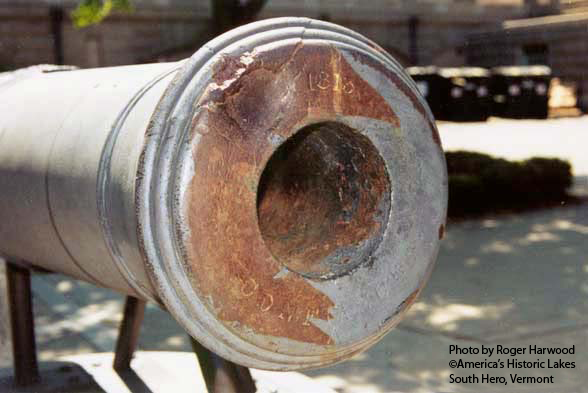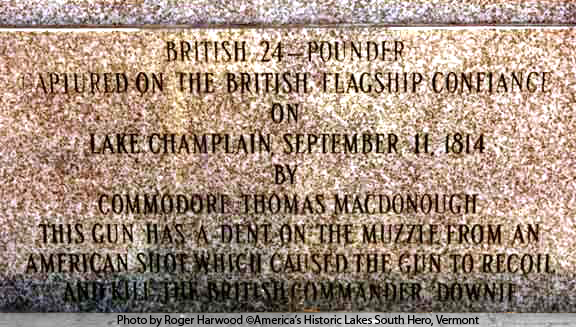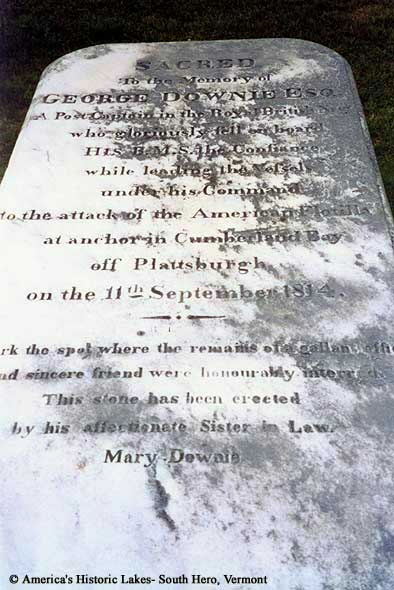Captain George Downie 1778-1814
George Downie was the eighth son of the Reverend John Downie, Minister of Gairloch (1758-1773), Stornoway (1773-1788) and Urray (1788 until his death in 1811). He was a twin of Hector, born on 19 January 1778, almost certainly at Tong, Stornoway where his father lived.
It is not clear when he joined the Navy but by 1805 he was a Lieutenant under Captain Boyle on HMS Seahorse. The following letter from Captain Boyle to Lord Nelson, published in the London Gazette of Saturday June 8, 1805, describes an action in which George Downie played an important part:
His Majesty's ship Seahorse, Gibraltar Bay, May 8, 1805
My Lord,
On the 4th inst. I learnt that a Spanish Convoy was on the coast to the Westward of Carthagena, chiefly loaded, on Government account, with gunpower, ordnance, and naval stores for the gun-boats at Malaga, Ceuta, and Algeziras. Conceiving the destruction of the same of consequence, I kept close along shore with the hope of falling in with them, and effecting my wishes; at two P.M. they were discovered from the mast-head; at five I observed them haul into St. Pedro, anchorage to the east of Cape de Gatte, under the protection of a fort, two armed schooners, and three guns and mortar launches, where I determined to attempt to destroy them. The vessel of greatest consequence to get out was an ordnance brig loaded with 1170 quintals of powder, and various other stores, commanded by Don Juan Tetragut, Master in the Spanish Navy; and which was effected by Lieutenant Downie, First of the Seahorse, in a six-oared cutter, in the most gallant and well-judged manner, whose conduct on this, as well as every other occasion, I feel it my duty to mention to your Lodship as that of a most zealous officer, and I beg leave to add, that Lieutenant Downie assures me he met with every possible assistance from Mr Thomas Napper, Midshipman, who accompanied him in a four-oared boat. ...
He was still on board HMS Seahorse, now under the command of Captain Stewart,
in 1808 when Captain Stewart wrote to Lord Collingwood recommending Lieutenant Downie for promotion following the capture of two Turkish men of war and a galley off Skyra on 5 July 1808:
Having now, my Lord, given you the details of this affair, there only remains the pleasant office of commending to you the Officers and ship's company, who, during a tedious night's action, where much depended upon working the sails as well as the guns, hehaved in a manner to command my utmost gratitude. The disparity of force, with the loss in the enemy's ships, will prove the greatness of their exertions, to which I shall add that 30 men were absent from the ship. Mr Downie, the First Lieutenant, is an Officer of merit, ability, and experience; and I beg strongly to recommend him to your Lordship's protection for promotion. ...
James records that George Downie was promoted to Commander as a result of this recommendation¹.
By 1814 he was the Captain of the Confiance, the flagship of the British fleet which was assembled at the request of Lieutenant General Sir George Prevost, Bart. to support British troops in the battle of Plattsburgh on Lake Champlain, New York State. It appears that the Confiance had been newly built, and recently crewed with sailors who had newly arrived in Quebec, and was scarcely ready to fight an engagement when called into action.
Various accounts of the battle exist but a very good summary was on the now defunct (but still available via the Wayback Machine) America's Historic Lakes website. Captain George Downie was killed early in the engagement when a cannonball from the US flagship Saratoga hit the muzzle of the cannon behind which he was standing, propelling the cannon into the unfortunate Captain. James provides a near contemporary account of his death, written in 1826:
Within 15 minutes after the commencement of the action, fell the British commanding officer, the brave, the lamented Captain Downie. The way in which he met his death, is of too extraordinary a nature to be passed over. A shot from the Saratoga struck one of the Confiance's 24-pounders, and threw it completely off the carriage against Captain Downie, who was standing close in the rear of it. He received the blow upon his right groin, and, although signs of life remained for a few minutes, never spoke afterwards. No part of his skin was broken: a black mark, about the circumference of a small plate, was the only visible injury. His watch was found flattened, with the hands pointing to the hour, minute, and second, at which the fatal blow had been given.
²
The cannon which killed George Downie is preserved at the US Naval Academy at Annapolis, Maryland.
Photographs reproduced by kind permission of Roger Harwood.
|


British 24-Pounder captured on the British Flagship Confiance on Lake Champlain, September 11 1814 by Commodore Thomas MacDonough. This gun has a dent on the muzzle from an American shot which caused the gun to recoil and kill the British Commander Downie. |
 |
Captain Downie is buried in Riverside Cemetery in Plattsburgh, New York State and his gravestone was erected by his sister in law, Mary Downie. I have not so far identified Mary's husband among George's many brothers.
Sacred to the Memory of George Downie, Esq., a post Captain in the Royal British Navy, who gloriously fell on board His B.M.S. The Confiance, while leading the vessels under his command to the attack of the American Flotilla at anchor in Cumberland Bay off Plattsburgh on the 11th Sept. 1814.
To mark the spot where the remains of a gallant officer and sincere friend were honourably interred this stone has been erected by his affectionate sister-in-law. Mary Downie.
Photograph reproduced by kind permission of Jim Millard, webmaster of the America's Historic Lakes website. |
George Downie never married, and so has no known descendants. His will, made a week before his death, is listed in the Records of the Prerogative Court of Canterbury PROB11/1574, dated 15 November 1815.
The beneficiaries are his mother, Charlotte Mackenzie, who was to receive the interest on his estate during her lifetime, though in fact she died on 14 September 1815, before the will was proved; his sister Jean who was to receive the interest after his mother's death; his nieces Christy and Annabella McIver (I have not identified their mother who must have been a sister) who were to receive the interest following Jean's death; and on the death of all of these the eldest son of his brother, the Rev. Alexander Downie D.D. Alexander's eldest son, John, died in 1820, leaving Charles Downie, minister of Contin, who died there in 1852 and his brother Sir Alexander Mackenzie Downie who died soon after Charles in Frankfurt.
There was also a bequest to his sister, Anne, the wife of the Reverend Neil Kennedy, minister of Logie Easter. The executors were his brother Alexander and his brother in law George Gordon, who was married to George's sister Annabella.
George's mother Charlotte received a pension of £100 on 16 February 1815 (Ordinary Estimate of His Majesty's Navy, 1816, page 32).
Link to the family group page of John Downie and Charlotte Mackenzie.
¹ James, William (1826) The Naval History of Great Britain from the declaration of war by France in 1793 to the accession of George IV. London: Richard Bentley Vol V page 90.
² James, William (1837) The Naval History of Great Britain from the declaration of war by France in 1793 to the accession of George IV (New Edition). London: Richard Bentley Vol V1 page 344.
Email me if you have any more information on Captain George Downie or his family (copy the address from the graphic):


Page updated
27 November, 2008
by Ian Downie


